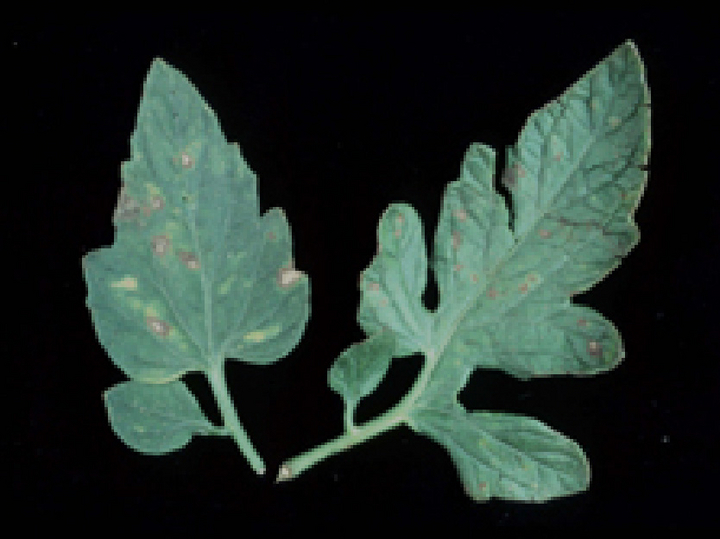Gray Leaf Spot on tomato
Stemphylium botryosum f. sp. lycopersici
Damage symptoms

Gray spot disease is usually limited to an infestation of the leaves. In exceptional cases, the petioles and stems of the plants can also be affected.
After infection has occurred, small, barely visible brownish spots initially appear on the lower leaves. The spots are roundish to elongated and distributed over the entire leaf blade. Usually, the spots remain small, about 2 mm in diameter. However, they can grow up to 1.5 cm in size and, when confluent, can cover larger leaf areas.
The spots have a lighter, necrotic center and are surrounded by a dark brown to brown-reddish margin. Under high humidity, a blackish-brown spore turf can be seen on these patches. On older leaves, larger leaf areas are affected and eventually die. When the centers of the spots dry out, they break out of the leaves. The leaves wilt, dry out very quickly, and fall off. Sometimes penetration of the fungus into the fruit also occurs from the stem ends of the fruit.
Propagation and transmission
The fungal spores are spread over long distances by wind. They germinate very quickly in the presence of water, especially in the form of dew, and warm temperatures (24 °C - 27 °C). Gray spot disease can already infect young plants and be carried along when transplanted to greenhouses.
The fungus survives on infested plant remains. It grows very quickly in the host tissue, so that the first symptoms are already visible two to three days after successful infection.
Prevention and control
- Use resistant varieties if possible
- Humidity should be kept at a low level
- Treat with plant protection products only in case of very heavy infestation (see list of plant protection products approved in Austria)
Last updated: 23.11.2021
automatically translated